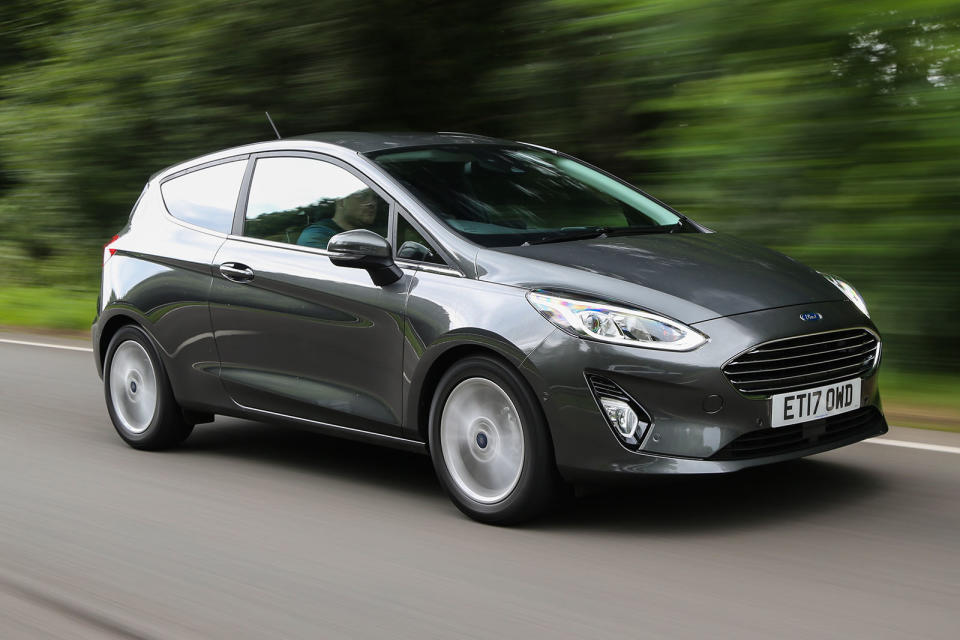Used Ford Fiesta 2017-2022 review

For anyone under the age of 40, there has always been a Ford Fiesta. Such longevity confers on it the kind of rarefied status that makes a car synonymous with both the brand and its proclaimed values.
Certainly, the outgoing model – launched back in 2008 – has been not only the bedrock for Ford’s sales in Europe but also the prime conveyor of its ‘Feel the difference’ dynamism and peach-pretty exterior styling.
And although it never managed to be the cheapest, most practical or best-equipped supermini, the Fiesta's virtues repeatedly distinguished it as not only the car to beat in our eyes but also the default option for a new generation of downsizers and first-time buyers.
Consequently – like Volkswagen with the Volkswagen Golf or BMW with the 3 Series or Porsche with the Porsche 911 – when it came to replacing the outgoing Fiesta with a new generation, Ford has opted not to drastically tamper with the formula.
In fact, although the car ultimately earns an ‘all-new’ differentiation from its predecessor, some of it could rightly be described as a far-reaching overhaul rather than a white-space rethink.
Instead, Ford’s stated aims have focused on addressing the issues that inevitably crop up when producing the same model for nearly a decade: renovating the styling, reinventing the interior, improving quality and fine-tuning the performance.
The timing of this model's arrival was impeccable. The latest generation of rivals at the time – most notably, the Seat Ibiza and the Volkswagen Polo – could credibly claim to have exceeded the long-standing benchmark set by the Fiesta.
As a result, this new version must improve on not only its predecessor’s impressive legacy but also the polished desirability of the competition. No pressure.
2008-2017 Ford Fiesta engine line-up and trim levels
This Fiesta was available in no fewer than six trim levels, including the semi-rugged Fiesta Active and the pocket rocket Fiesta ST hot hatch. Standard cars could be ordered in Trend, Titanium, ST-Line and Vignale trim.
Entry-level Trend cars ride on 16in alloy wheels and get LED projector headlights, electric heated wing mirrors, a QuickClear heated windscreen, 8in touchscreen infotainment system with wired Apple CarPlay and Android Auto, cloth upholstery and lane keep assist as standard.
Stepping up to Titanium models adds rear privacy glass, chrome exterior trim, keyless start, cruise control and rear parking sensors, while Titanium X cars get 17in alloy wheels, LED rear lights, climate control and uprated B&O play stereo system, among other extras.
ST-Line cars share more dynamic exterior design elements with the full-fat ST, and get a sports-tuned suspension, but otherwise shares a similar kit list to the Titanium trim. ST-Line X models step up to 18in alloys, and largely have the same extras as the Titanium X.
Vignale cars have their own unique front grille, bodystyling and 17in alloy wheels. Inside, the front seats are heated and upholstered in Sensico artificial leather. Adaptive cruise, keyless entry, front- and rear parking sensors and a rear view camera are all included as standard.
The engine line-up consists of a naturally-aspirated 1.1-litre petrol, available on base-level Trend cars only, and a 1.0-litre turbocharged EcoBoost three-pot in a range of outputs. The 99bhp EcoBoost is sold in six-speed manual form only.
The 123bhp and 153bhp versions included mild hybrid assistance for improved efficiency, but only the lesser-powered variant can be equipped with a 7-speed DCT automatic transmission. The range-topping ST got a bespoke 1.5-litre unit which producing 197bhp. Diesel engines were removed from the line-up entirely in 2020.
]]>

 Yahoo Autos
Yahoo Autos